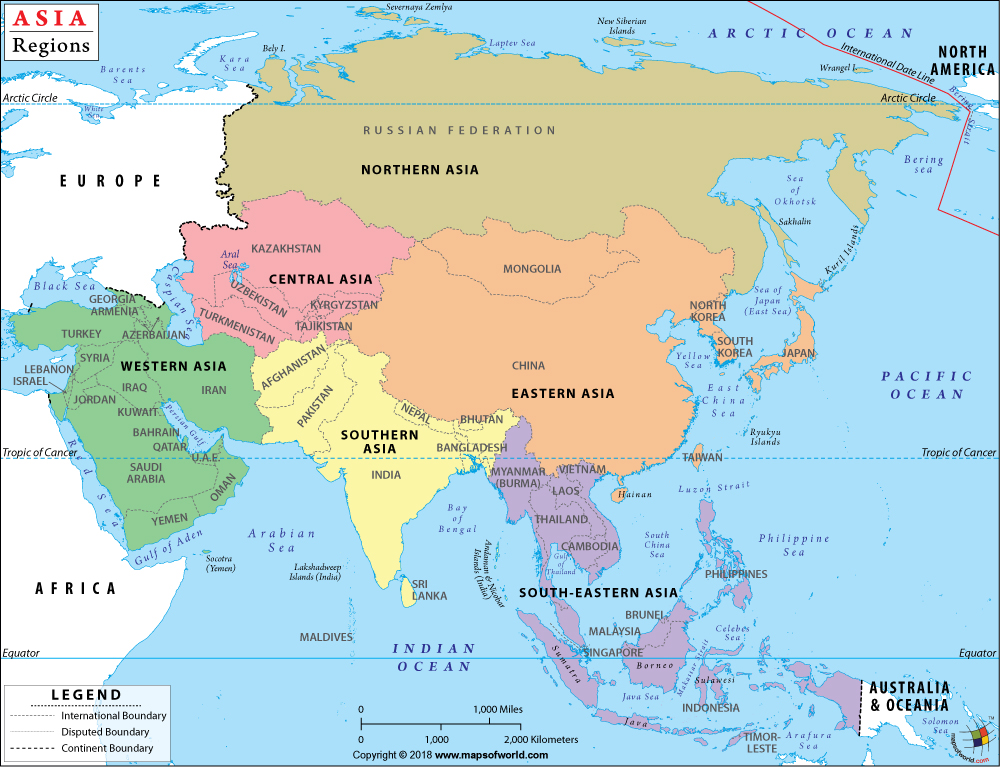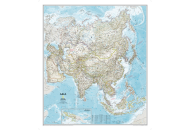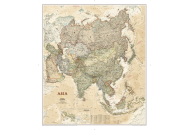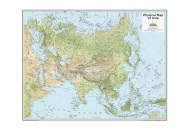About Asia
As the world’s largest continent, it is difficult to know where to start when describing Asia. The continent has a population of over 4,450,000,000, which equates to 59.69% of the world’s total population. It is a relatively ‘young’ continent, with a median age of 30.7 years old, and this is expected to get even lower as the population rapidly expands. The continent isn’t showing any signs of slowing down, and it’s estimated that that the population will reach a whopping 5,266,848,432 by 2050.
Comprising six sub-regions; South Asia, East Asia, Southeast Asia, West Asia, Central Asia, and North Asia, this diverse continent is vast as you would expect. It is a ‘bucket list’ destination for many travelers. Each sub-region consists of many different countries, each hosting a variety of geographical features, foods, customs, cultures, clothing, weather, and more. However, the simplest way to breakdown this ginormous continent is by identifying the different the sub-regions. So, grab your map of Asia and let’s get going.
South Asia
With a population of 1,870,640,803, South Asia is Asia’s largest sub-region. It comprises the sub-Himalayan SAARC countries, including Afghanistan, Bangladesh, Bhutan, Maldives, Nepal, India, Pakistan, and Sri Lanka. It is home to some of the most populated cities in the world, including Delhi and Mumbai in India, Karachi in Pakistan, and Dhaka in Bangladesh. The area is often referred to geologically, as the Indian Subcontinent. Although the South Asia region covers more than just the ‘subcontinent.’
In early colonial times, strategists considered South Asia as a part of East Asia, but the two are now referred to as two separate sub-regions. The boundaries of South Asia vary based on how the region is defined…Some geographers consider certain parts of Iran and Afghanistan to fall within the Greater Southwest Asia region.
South Asia not only has the largest population, it also has the tallest point, in Mount Everest, which is located in Nepal.
East Asia
Coming in second with a population of 1,624,853,705 is East Asia. Countries include; China, Mongolia, Taiwan, North Korea, South Korea, and Japan, all are in this region. Some of the largest cities in the world are located within East Asia, including Tokyo in Japan, and Seoul in South Korea.
With one of the most successful and developed economies in the world, East Asia’s financial situation is thriving. And is home to some of the most technologically advanced countries, such as South Korea, Taiwan, and Japan. The Japanese, with a median age of 44.6, are the second ‘oldest’ people in the world.
Reaching Asia is an exceptionally long-haul flight for the US, but if you decide to visit China, you’ll glad to know, that over the initial jet lag, you will be in a single time zone. China, despite being the third largest country in the world by area, has only one time-zone.
South-East Asia
Brunei, Cambodia, Timor, Indonesia, Laos, Malaysia, Myanmar, the Philippines, Singapore, Thailand, and Vietnam are all located in Southeast Asia, comprising a population of 647,589,953. This sub-region of Asia is geographically divided again, into Mainland Southeast Asia, also known as ‘Indochina,’ and Maritime Southeast Asia. Mainland Southeast Asia consists of Vietnam, Laos, Cambodia, Thailand, Myanmar, and Peninsular Malaysia, whereas ‘Maritime Southeast Asia,’ is Indonesia, the Philippines, East Malaysia, Brunei, Singapore, and East Timor. Although Christmas Island and the Cocos Islands are governed by Australia, they are still considered to be a part of South East Asia.
Islam is the most widely practiced religion in Southeast Asia, although Buddhism and Christianity are also popular. With many different religions, many different languages are spoken; with Indonesia topping them all, with over 700 languages spoken.
West Asia
The countries that fall in this region include Armenia, Azerbaijan, Bahrain, Cyprus, Georgia, Iraq, Israel, Jordan, Kuwait, Lebanon, Oman, Qatar, Saudi Arabia, Syria, Turkey, United Arab Emirates, and Yemen. Belonging to the Sinai Peninsula, Egypt is considered to be a transcontinental country. Regardless of the definitions, this sub-region is estimated to have a population of 266,169,673.
Located directly south of Eastern Europe, West Asia is surrounded by seven major seas; the Aegean Sea, Black Sea, Caspian Sea, Persian Gulf, Arabian Sea, Red Sea, and the Mediterranean Sea. The Caucasus Mountains can be found to the north of the region, and on the east, the region adjoins South and Central Asia. While South Asia holds the records for the highest point, West Asia has the lowest; the Dead Sea, located between Jordan and Israel.
Central Asia
Asia’s smallest sub-region is Central Asia, which was considered to be a distinct region of the world in 1843, by the geographer Alexander von Humboldt. This region contains exceptionally varied geography, including high passes and mountains, as well as an ever-expanding range of deserts.
With a population of 69,241,030, Central Asia includes five republics of the former Soviet Union, including Kazakhstan, Kyrgyzstan, Tajikistan, Turkmenistan and Uzbekistan. Kazakhstan is so large in size that people living on the western border are actually closer to Vienna than they are to Almaty; their own country’s previous capital which has now been replaced by Astana.
North Asia
North Asia comprises Siberia and Russian Far East, which is located in the Asian part of Russia. North Asia is also home to the Ural Mountains. Some of the major cities that are located in North Asia are Irkutsk, Omsk, Vladivostok, Novosibirsk, Yekaterinburg, and Barnaul, to name a few. Some of the languages that are spoken in North Asia are Russian, Mongolic, Turkic, Ainu, and Eskima-Aleut. Though climate in North Asia varies according to the region, it experiences very cold in winters.
Depending on what sort of experience you are looking for, whether it is trekking through the mountains of Central Asia, relaxing on a beach in the Southeast, or trying out the latest technologies in the East, there are plenty of choices.





